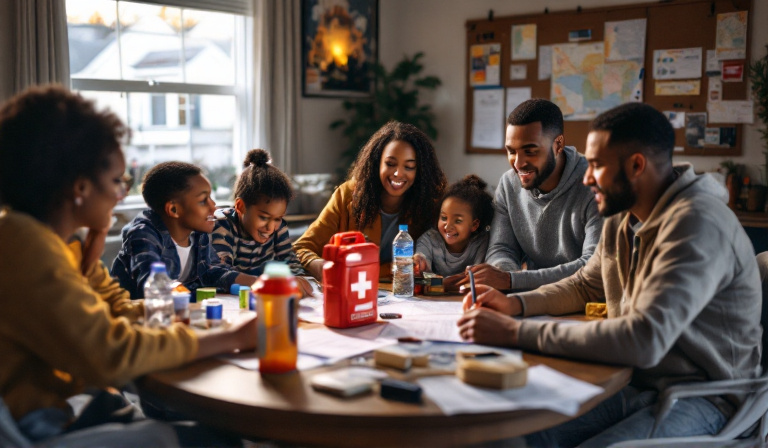
Ensuring your home is prepared for emergencies is a crucial part of maintaining safety and peace of mind. While we often hope for the best, it’s wise to prepare for the unexpected. Whether it’s a natural disaster, power outage, or any other unforeseen event, having a plan can make all the difference. This guide will walk you through essential steps to fortify your home and keep your loved ones safe.
Understanding Potential Risks
Before you start preparing, it’s important to understand the potential risks your area may face. Different regions are prone to different types of emergencies, such as earthquakes, hurricanes, floods, or tornadoes. Researching and acknowledging these risks will allow you to tailor your emergency preparedness plan accordingly.
Creating a Family Emergency Plan
A well-thought-out emergency plan is the cornerstone of home safety. Here’s how to create one:
- Establish Communication: Ensure all family members have a clear understanding of how to communicate during an emergency. Designate a primary contact person outside your immediate area whom everyone can check in with.
- Designate Meeting Points: Choose safe locations both inside and outside your home where family members can meet in case of evacuation.
- Practice Regularly: Conduct regular drills to ensure everyone knows what to do and where to go in an emergency.
- Plan for Specific Needs: Consider the needs of children, pets, elderly family members, and anyone with special needs.
Building an Emergency Kit
An emergency kit is an essential part of preparedness. It should be easily accessible and include the following items:
- Water: At least one gallon per person per day for at least three days.
- Non-Perishable Food: A three-day supply for each person, including items like canned goods and energy bars.
- First Aid Kit: Include bandages, antiseptics, pain relievers, and any prescription medications.
- Tools and Supplies: Flashlights, batteries, a multi-tool, and a manual can opener.
- Personal Items: Spare clothing, blankets, and any necessary personal hygiene items.
- Important Documents: Copies of identification, insurance policies, and medical records.
- Cash: Small denominations are best in case electronic payment systems are down.
Securing Your Home
Securing your home involves both preventative measures and ensuring structures can withstand emergencies:
- Structural Safety: Reinforce doors and windows, and ensure your roof and foundation are solid.
- Fire Safety: Install smoke detectors and fire extinguishers, and ensure everyone knows how to use them.
- Electrical Safety: Know how to safely turn off gas, water, and electricity if necessary.
Stay Informed
Staying informed during an emergency can provide vital information and instructions. Consider the following:
- Emergency Alerts: Sign up for local emergency alerts and notifications.
- Radio and Television: Keep a battery-powered radio handy to receive updates if power is out.
Community Involvement
Being involved with your community can enhance your preparedness:
- Know Your Neighbors: Establish a network where you can rely on each other for support during emergencies.
- Volunteer: Participate in or organize community emergency preparedness events.
Regular Review and Update
Emergency preparedness is not a one-time task. Regularly review and update your plans and supplies:
- Check Expiry Dates: Regularly check and replace food and water supplies.
- Update Plans: Revise your family emergency plan annually or as your family’s needs change.
By taking these steps, you can help ensure that your home and family are ready to face whatever challenges come your way. Preparing for emergencies may require effort and resources, but the peace of mind and safety it provides are invaluable.

